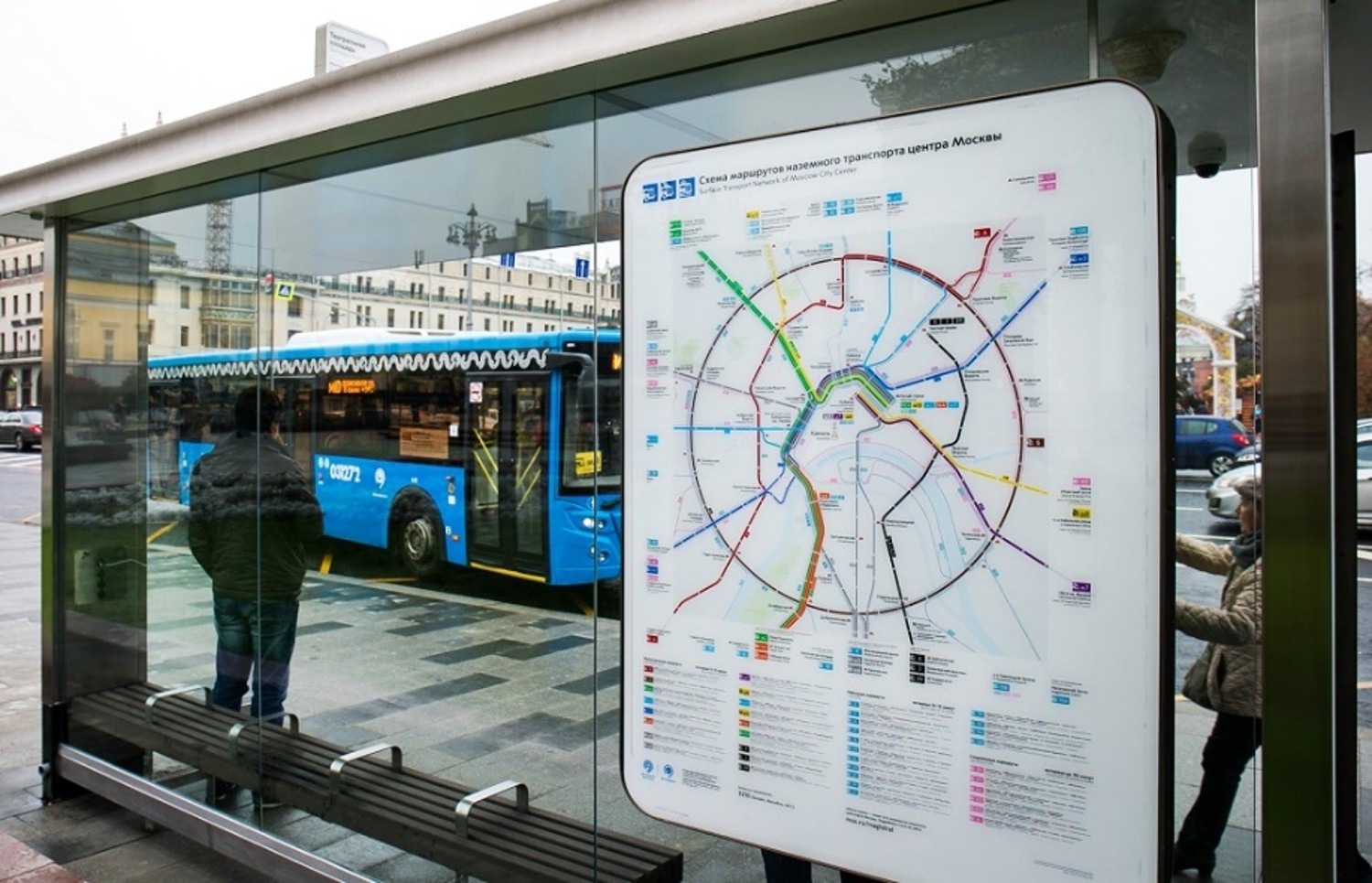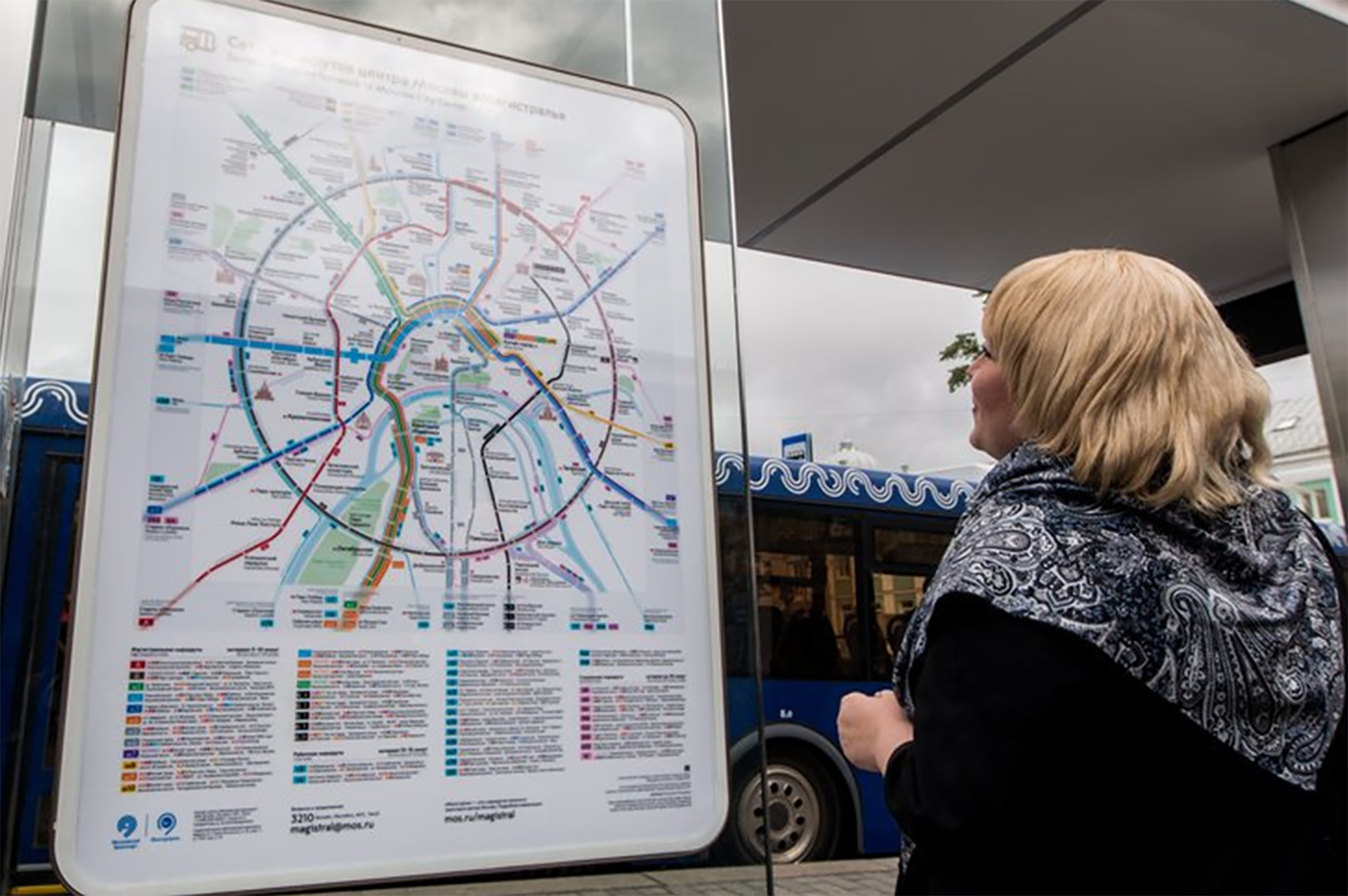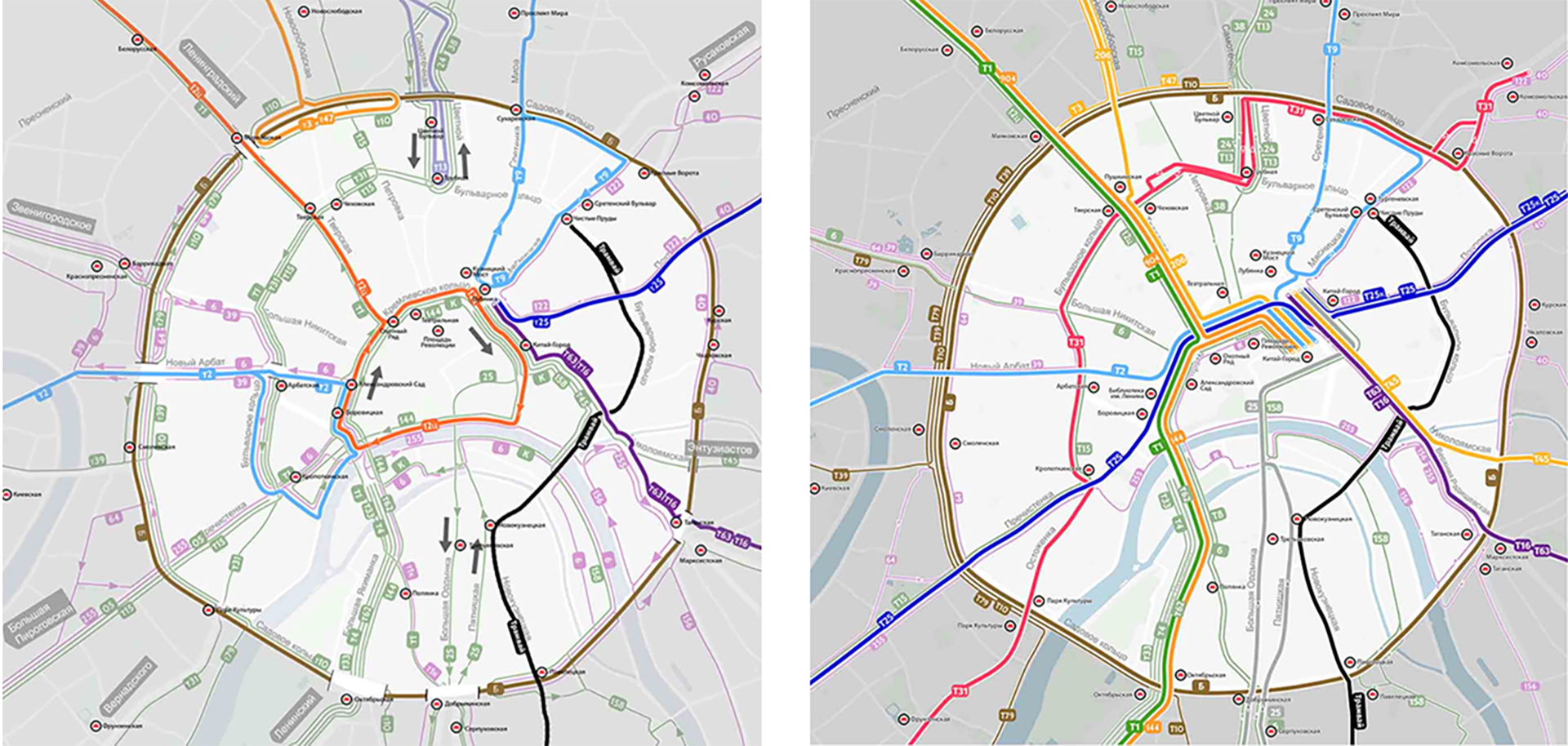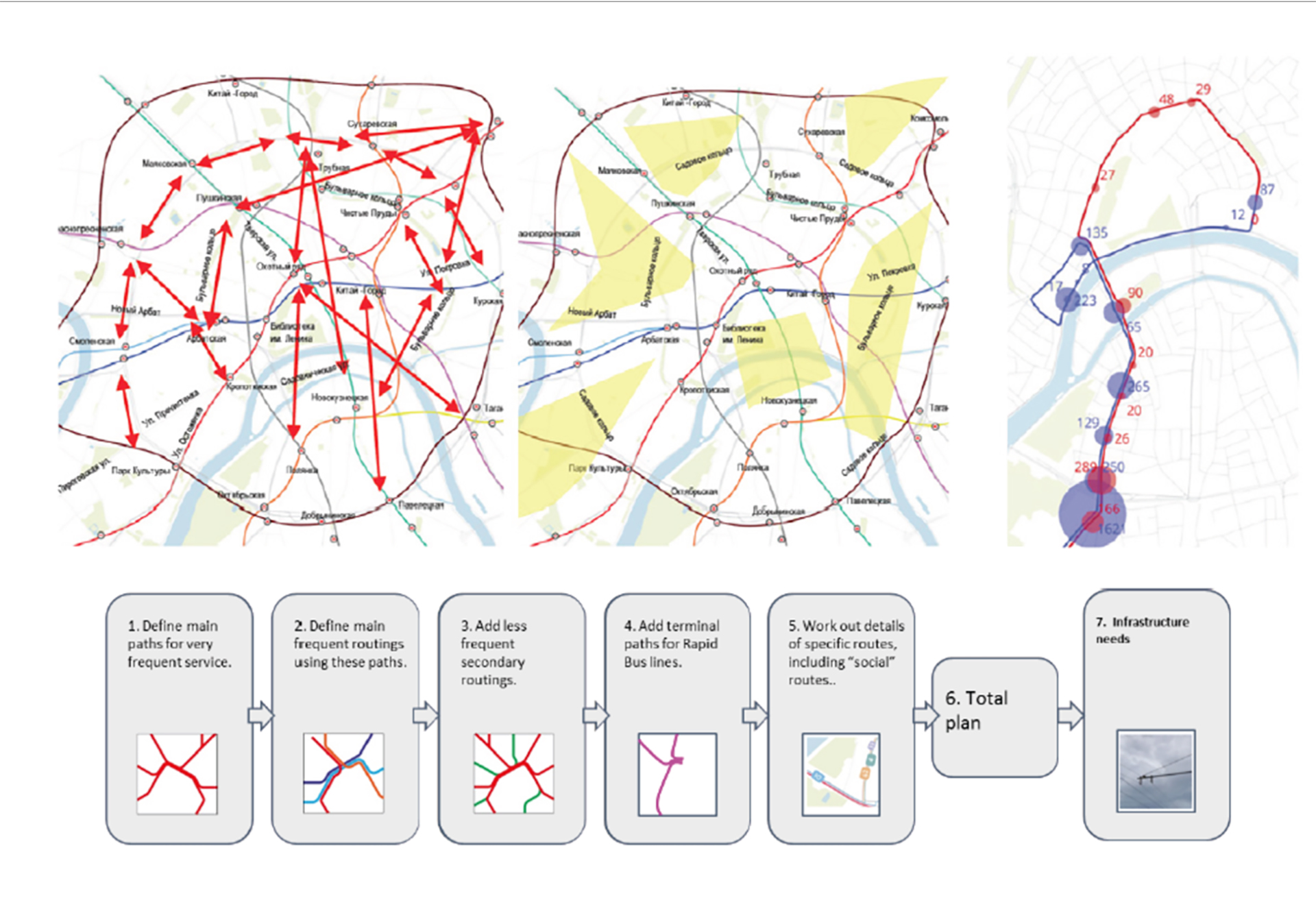Redesign of Moscow’s surface public transport network
Moscow

In 2016, the Moscow Department of Transport launched an ambitious project to reorganise the bus and tram network around Red Square and the Kremlin, in the city's most central area.
MIC-HUB collaborated with Jarrett Walker + Associates as a technical partner, in conjunction with Urbica and Moscow DoT consultants, to develop a new model for the surface public transport network. This model was designed to ensure functional integration with the Moscow underground. The aim was to provide faster, more direct connections for short journeys within the city centre and reduce the impact of station access times.
Despite the presence of an extensive underground network, surface transport in Moscow presented several critical issues:
• deep and widely spaced underground stations with access times exceeding five minutes;
• major urban arteries designed for car traffic with pedestrian underpasses, one-way streets, and limited turns that interrupted the continuity of bus routes;
• one-way traffic on the Kremlin Ring, which forced bus routes to terminate in the centre instead of crossing it, reducing the network's effectiveness.
The result was a fragmented, complex, and poorly organised network with reduced accessibility for short daily journeys.
Location
Moscow
Client
Moscow Department of Transportation
Main expertise
Regional & Urban Transport Planning; Transport and Traffic Modelling; Public Transport Operations
PROJECT HIGHLIGHTS
- A new, implemented network that simplifies public transport connections
- The definition of fewer routes running more frequently in simpler, straighter, two-way patterns
Project gallery
Our contribution
MIC-HUB supported Jarrett Walker + Associates and the project team in analysing the existing demand of the network and the connected issues.
Through intensive workshops with the Moscow Department of Transport, the project team developed a new model based on:
• simpler and more direct routes, including bidirectional routes through the city centre;
• high-frequency services, with resources concentrated on strategic axes;
• multimodal integration with the underground and tram network;
• dedicated public transport lanes to support urban redevelopment.
MIC-HUB collaborated on developing a new optimised network, which aimed to align public transport, pedestrianisation and urban space.
The new network, called Magistral, is simpler to use and offers a frequent and reliable service, providing a sustainable alternative to private cars.




